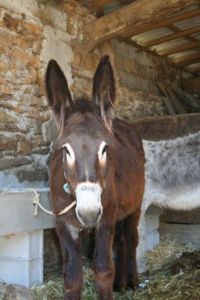Introduction

Antimicrobial agents should only be used in situations where the diagnosis warrants this. The use of antimicrobial agents for relatively trivial infections encourages the selection of resistant organisms. Irrational use may expose treated animals to unnecessary risks.
Dosing
Successful antimicrobial therapy relies on administering sufficient doses to effectively suppress (bacteriostatic) or kill (bactericidal) pathogens at the site of infection so that the host’s defences can eliminate them. For diseases of unknown cause or attributable to organisms with unpredictable susceptibility, e.g. Gram-negative enteric bacteria, there is no substitute for bacterial culture and identification of the causative agent. A Gram stain can be performed immediately on a direct smear and will direct initial therapy until the laboratory results are obtained.
In the laboratory, the relationship between an antimicrobial drug and a pathogen is described by the minimum inhibitory concentration (MIC), the lowest drug concentration that inhibits bacterial growth. The information listed in a culture and susceptibility report is intended to guide antimicrobial selection but must be interpreted carefully since the testing does not take into account a number of important factors, such as host defences, drug distribution, the infection site environment and the route of drug administration.
Local factors may influence an agent’s activity at the infection site
- Potentiated sulphonamides achieve adequate concentrations in abscesses but are ineffective in purulent material and necrotic tissue
- Rifampin, the tetracyclines and metronidazole all achieve high concentrations in abscesses and retain their antimicrobial activity in purulent environments
For many drugs, the distinction between bactericidal and bacteriostatic is not exact and depends on the pathogen involved and the drug concentration attained in the target tissues. A bactericidal drug (aminoglycoside, penicillin, cephalosporin, potentiated sulphonamide) is preferable to a bacteriostatic drug (tetracycline, sulphonamide) for neonatal septicaemia, life-threatening conditions and surgical prophylaxis.
Penicillins and cephalosporins are bactericidal but exhibit so-called time-dependent (concentration-independent) bacterial killing. Plasma concentrations of these agents should exceed the MIC of the pathogen for 50-80% of the inter-dosing interval, and further increases in dose rate will not increase the bactericidal activity.
Aminoglycosides exhibit concentration-dependent bacterial killing and often also produce a prolonged post-antibiotic effect (a period after drug concentration falls below MIC when the bacterial growth remains suppressed), thereby allowing long interdosing intervals that maximize clinical efficacy and minimize side effects.
Combinations of agents are appropriate in only a few situations
- Known synergy, e.g. a penicillin or cephalosporin with an aminoglycoside
- Preventing rapid development of bacterial resistance, e.g. erythromycin plus rifampin to treat Rhodococcus equi infections
- Extending the spectrum of activity in the initial therapy of life-threatening infections
- Treatment of true mixed bacterial infections
Avoid non-synergistic or antagonistic combinations
- A bactericidal agent with a bacteriostatic agent. The former require actively dividing bacteria for their activity and the latter stop bacterial growth
- A penicillin plus a potentiated sulphonamide has minimally additive effects against pathogens but additive effects against the commensal gastrointestinal microflora
Literature Search
Use these links to find recent scientific publications via CAB Abstracts (log in required unless accessing from a subscribing organisation).
Antimicrobals in donkeys publications
References
- Horspool, L. (2008) Clinical pharmacology In Svendsen, E.D., Duncan, J. and Hadrill, D. (2008) The Professional Handbook of the Donkey, 4th edition, Whittet Books, Chapter 12
|
|
This page was sponsored and content provided by THE DONKEY SANCTUARY |
|---|
